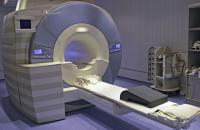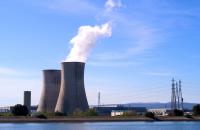Electromagnetic fields and health
There are many questions and considerable concern over the possible impacts of electromagnetic fields (EMF) on health.
The public debate is usually focused on high-voltage power lines and mobile telephone relay antennas. In practice, there are multiple sources of exposure to electromagnetic waves. They may originate from the immediate environment (mobile telephones, computers, anti-theft barriers, etc.), public services (FM and TV transmitters, communication systems used by public services: police, fire brigade, ..., maritime and aerial radar, etc.), industrial equipment (welding presses, furnaces, etc.) or medical equipment (medical imaging examinations using magnetic resonance).
Changing uses and technologies are leading to the increasingly intensive management of the electromagnetic spectrum. In the years to come, the emergence of products relating to the Internet of Things will significantly increase the number of potential sources of emissions.
Are electromagnetic waves harmful? The only certainty is that a testing laboratory specialising in measurements cannot answer such a question.
Far removed from the debates among epidemiologists, researchers, doctors and sometimes people without any knowledge of the subject, Emitech operates as a measurement specialist.
Our role is to quantify the levels of exposure to electromagnetic waves pursuant to the test methods and standards in force, and to carry out these services according to the principles of best professional practice.
The different "waves and health” measurements carried out on site by Emitech
- In situ measurements according to the ANFR/DR-15 protocol, version 3.1 , which aims to verify the compliance of fixed transmitting stations, in relation to the benchmark levels, with the limits for public exposure to electromagnetic fields within the 100 kHz to 6 GHz band:
- Broad band probe-based mapping up to 6 or 18 GHz (CASE A)
- Detailed spectral measurements (CASE B for services and/or CASE B for significant emissions and/or CASE B extrapolation)
- COFRAC accreditation
- "Radar" measurements:
- Broad band probe measurements up to 40 GHz
- Radar frequency measurements up to 40 GHz
- Levels compared with the limits of the COUNCIL RECOMMENDATION of 12 July 1999 relating to limiting the public’s exposure to electromagnetic fields, and/or to the limits in the Worker’s Directive 2013/35/EU.
- Possibility of zoning pursuant to INSTRUCTION no. 302143/DEF/SGA/DFP/PER/5 relating to protecting people from the effects of electromagnetic fields emitted by equipment or installations operated by the Ministry of Defence
- COFRAC accreditation up to 18 GHz
- HQE (high environmental quality distinction) measurements – Target 12 (Basic Level / Efficient Level / Very Efficient Level)
- Identification of "radio-frequency” and "energy” sources in the immediate environment and for the project
- Measurements before and after work has been completed
- Estimation of the ambient and project electromagnetic fields with an indication of the project’s contribution to the overall exposure and a calculation of a projected power balance
- Orientation required to make justified and satisfactory arrangements to optimise the electromagnetic field for the project
- Measurements of magnetic fields (50 Hz and other)
- Pursuant to the UTE C99-132 protocol for the in situ measurement of 50 Hz magnetic fields generated by electricity transmission structures, November 2010 edition, and the TEN addition to the UTE C99-132 protocol (overhead and/or underground high-voltage power lines, etc.)
- Measurement of 50 Hz magnetic field pursuant to Decree 11-1697 (NT CTO 12 00146 Index 1) / COFRAC accreditation
- According to the IEC 62110 standard relating to electric and magnetic field levels generated by AC power systems (transforming stations, high-voltage power lines, etc.) - Measurement procedures with regard to public exposure
- Levels compared with the limits of the COUNCIL RECOMMENDATION of 12 July 1999 relating to the limitation of the public’s exposure to electromagnetic fields and/or to the limits of Workers’ Directive 2013/35/EU.
- “Mapping" measurements:
- Performance of mapping/creation of zoning defining the areas delimited by the Workers’ Directive 2013/35/EU and by the Council Recommendation of 12 July 1999 for the public, using a broad band probe of 100 kHz – 6 GHz (or 18 or 40 GHz), or a teslameter (magnetic field of 5 Hz to 400 kHz with discrimination of 50 Hz…)
- Mapping of neighbourhoods and streets, etc.: the electromagnetic fields of the main services, such as FM, TV, GSM 900/1800, 3G, DECT, WIFI, WIMAX, etc., are recorded in real time by a vehicle equipped with a satellite navigation system and a dosimeter as it travels through the desired locations…
- In-situ measurements relating to workers’ exposure
- Measurements in the vicinity of WiFi / DECT / INDOOR mobile telephony terminals, etc.
- Measurements in the vicinity of transforming stations, or on sites near overhead high-voltage power lines, etc.
- Measurements close to arc-welding stations (pursuant to EN 40444 standard), induction furnaces, etc.
- 2013/35/EU Directive
- COFRAC accreditation












